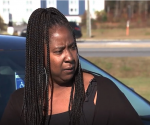Coronavirus is spreading fast in states that may reopen soon, study finds
[ad_1]
The COVID-19 coronavirus has saturated the United States, and it appears to be spreading quickly in some places that are planning to ease social distancing restrictions soon, a new study shows.
County-level data shows COVID-19 cases in all 306 “hospital referral regions” in the United States, the areas where people go for hospital or specialist care, said study leader Dr. Elliott Fisher, a professor of health policy and medicine at The Dartmouth Institute in Lebanon, N.H.
“We need to be aware that this epidemic is far from over. The number of cases in every region today are higher than they were a week ago,” said Fisher. “We have no place in the country where there are not cases being reported within a region.”
The data also show that COVID-19 cases are growing more rapidly in places that have not been as heavily hit as New York City, Seattle, San Francisco and other early coronavirus hot spots.
“The growth rates that are highest are now in the Midwest and in the South,” Fisher said.
The Dartmouth Atlas Project
Cases are growing fastest in Grand Forks, N.D.; Sioux City, Iowa; Waterloo, Iowa; Columbus, Ohio; Green Bay, Wisc.; Amarillo, Texas; Lincoln, Neb.; Des Moines, Iowa; Wichita, Kan.; and Chattanooga, Tenn., according to the study.
“Governors should be taking careful account of what the status of the outbreak is in their region before they ease restrictions or impose more restrictions,” Fisher said.
“Five of the top 50 growth rate areas are in Texas, a state that’s pulling back on physical distancing. Two of the highest top 50 growth rate areas are in Georgia,” which announced this week it would allow some businesses to reopen soon, Fisher said.
The data came from the Dartmouth Atlas Project, which aggregated county-level data from The New York Times to track the spread of COVID-19 across the nation.
“It is increasingly clear that the country is in an asynchronous outbreak of the novel coronavirus,” Dr. Amesh Adalja, a senior scholar at the Johns Hopkins Center for Health Security, said of the Dartmouth data. “There are many parts of the country that have been more or less affected. As we move forward and begin to relax social distancing, it will be essential to use regional level data in order to best inform which actions should be taken.”
More than 99% of Americans have still not been infected with this highly contagious virus, and that means there are a huge number of people who are susceptible to it, Fisher said.
“The concern is that without adequate testing, we will have to wait for people to report sick in order to detect that the epidemic is surging again,” Fisher said. “We are very likely to see new or continuing outbreaks in these regions unless we maintain high levels of physical distancing as we do the opening up, which we are not ready to do yet by any stretch of the imagination.”
Another set of data raises even more concerns regarding plans to reopen.
This data shows that the percentage of people 65 and older with two or more chronic conditions — those most at risk of dying from COVID-19 — are mainly concentrated in the Midwest, South and Northeast.
“Those are the regions where we want to be most vigilant about protecting people, about protecting those who live in nursing homes,” Fisher said. “That’s about the risk of serious illness in the population.”
[ad_2]
Source link











